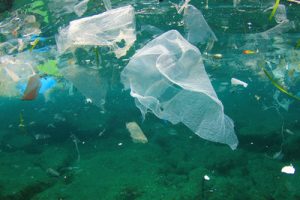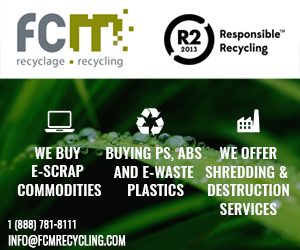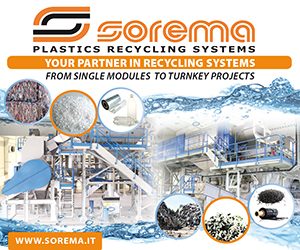 A new report emphasizes improved collection and separation efforts – which lead to higher recycling rates – as a key way to prevent plastics from entering water bodies.
A new report emphasizes improved collection and separation efforts – which lead to higher recycling rates – as a key way to prevent plastics from entering water bodies.
In “The Next Wave: Investment Strategies for Plastic Free Seas,” nonprofit organization Ocean Conservatory and a number of industry stakeholders recommend improvements along all stages of the waste management process.
“Increasing the collection rate and quality increases the quality of feedstock for recycling and other technological solutions that create value from waste that would otherwise pollute landscapes, waterways and the ocean,” the team wrote in an executive summary.
Their goal is to cut in half the amount of plastic entering the oceans annually within the next eight years. That’s a tall order, considering there are already an estimated 165 million short tons of plastic waste in the oceans, according to figures published in Science Magazine that are cited in the new report. But with accelerating accumulation – largely due to population increase, greater consumption and bottom-of-the-barrel oil prices – the problem is quickly worsening.
Without action, and with figures estimating roughly 8.8 million tons of plastic seeping into the seas annually, the report predicts about 275 million tons could be in the oceans by 2025. That’s far more than volunteer teams can hope to collect on shorelines.
Teamwork is a must
“Waste management is highly complex,” the report says, adding that it involves “redesigning products, organizing waste streams, raising billions of dollars and introducing new treatment technologies,” as well as coordinating all those efforts.
A central thesis of the report is that to really make an impact on the amount of plastic flowing into oceans, organizations must work together. The group behind the research says it’s “committed to recruiting the necessary partners across these sectors” to make it happen.
The steering team includes industry representatives from Procter & Gamble, Dow Chemical Co., Chevron Phillips Chemical Co., American Chemistry Council and Amcor. The project team included the Closed Loop Fund and the Ocean Conservancy, among others.
To truly solve the problem long-term, the report warns, partnerships between the many players with vested interests.
“Through cooperative financing, sharing of analytical and marketing resources, research and development joint ventures, and joint advocacy for the right policies, it is possible to meet the environmental goal of significantly reducing the leaking of plastic waste to the ocean,” the report concludes.
Pinpointing Asia
The report stresses that substantial efforts must be made in the areas with the most ocean plastics waste.
The Asia Pacific region is predicted to consume about half of all plastic each year by 2025. That’s problematic, given the lack of waste infrastructure in developing Asian and Southeast Asian countries. These countries tend to have poorer waste management mechanisms and lack funding to improve collection. Meanwhile, impoverished residents struggle to afford collection fees and may opt to forgo paying for the service “when the alternatives of dumping, burning or burying trash is culturally acceptable, poorly regulated and free,” according to the report.
Improving waste management efforts in these countries requires a many-pronged approach. Recognizing the importance of collection, the report offers “integration of the informal and formal recycling centers” as a way to recover more and better materials.
Waste pickers play an important role in materials recovery in developing nations, the report says, but they naturally tend to focus on higher-value items, which generally excludes post-consumer plastics. Haulers could provide gear, benefits or wages to the pickers and utilize them to assist with more formal collection efforts.
Opportunities for improvement exist in each stage of the waste management process. The report recommends increasing the supply of recycled materials by designing products with increased recyclability in mind, as well as stimulating increased demand for recovered plastics among manufacturers.
More immediately, the report describes expanded beach cleanups, installing plastics traps near the entrances to waterways, and monitoring and blocking common points of plastics leakage.



